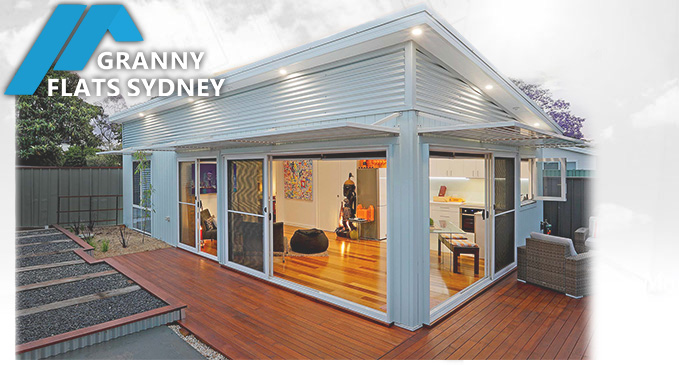Section 10.7 Certificate SEPP Compliance
Section 10.7 Certificate SEPP – Compliance Guide
This comprehensive guide lists the critical steps to checking your Section-10.7 Certificate for compliance with the SEPP. What’s the SEPP?
The ‘SEPP’ is the NSW State Environmental Planning Policy for Affordable Housing, often abbreviated as the ARHSEPP or AHSEPP. This stands for Affordable Rental Housing SEPP. The AHSEPP was released by the NSW Government in 2009 and allows many properties to gain approval for a granny flat. Specifically, compliance with the SEPP is a win for developers because:
1. Compliance with the AHSEPP saves time by allowing a Private Certifier (or Council) to approve granny flat proposals within just 10 working days. Here, we have our own Private Certifier, who approves around 4 to 5 granny flats every week.
2. Compliance with the AHSEPP saves money because you can get the cheaper approval as a Complying Development Certificate (CDC). It means you don’t need to apply for a separate Development Approval (DA) and Construction Certificate (CC). You can also save money because the ‘conditions of consent’ are generally more relaxed for a CDC versus a combined DA and CC.
What to Look for in your Section 10.7 Certificate
Every NSW Local Council will issue you with a Section-10.7 Certificate if you apply for one. They cost (at the time of writing this article) exactly $53.
Unfortunately every Council issues Section 10.7 Certificates which look different from each other and they can be difficult and time consuming to read. In this guide, will show you exactly what to look for when checking your S10.7:
1. Is it Residential Land? The first two pages will list the residential zoning of the allotment. This is, in most cases Residential 2(a) but may also be listed as 2(b), 2(c) and some Council’s refer to the SEPP listings such as ‘Residential R2’ etc. The main thing you want to see is the word ‘Residential’ here.
2. Is the property allowed to have development under ‘The General Housing Code’? This is a very important listing in every S10.7 Certificate and, amazingly, most Council’s list this question (and aswer) on Page 5 of the Certificate. Don’t ask me why but it almost always lists this question on page 5.
3. Is the property Flood Prone Land? This is a very critical question and one which can really affect the whole granny flat proposition for you. If the site is flood affected (listed under note 7 in your Certificate), there is still a chance that you can build a granny flat but some special checks have to be made with your Local Council. There is a logical process for identifying whether a property is ‘knocked out’ of a granny flat approval under the SEPP. Suffice to say it’s a fairly complicated process that we’ll explain in another article. If the land you’re interested in developing is listed as ‘flood prone’ give us a call and we’ll check it out for you.
4. Is the property Bushfire Prone Land? Being in a bushfire zone usually means having to spend money for bushfire protection of your new granny flat. Just how much you’ll need to spend depends on the Bushfire Attack Level (BAL) which can be determined by a qualified Bushfire Consultant. There are ways to check out how severe the bushfire risk is, including checking distances to bushland on Google Earth or, again, just call us and we’ll check it for you. If you are in a bushfire zone, check out this great granny flat bushfire guide.
5. Is the property in a Heritage or Conservation Area? If the answer to this question is yes, the answer to question 1 above will be a ‘no’. Building a granny flat in a heritage or conservation area can be very expensive and time consuming, depending on the Local Council, the type of conservation and the impact to the area overall. I don’t mind telling you that, as a heritage consultant, these types of approvals are difficult. The best process is to speak to your Council and arrange a ‘Pre-Da Meeting’ with them. They’ll usually ask that you bring a concept Site Plan, Floor Plan and Elevations for the meeting. We can do this for a fee and we’ll come with you to meet with Council’s Heritage and other Officers.
6. Is the property subject to a Tree Preservation Order? Out of over 400 granny flat approvals thus far, I’ve probably only seen this twice and in both cases we were able to site the structure to protect the significant tree. If your property is burdened by a Tree Preservation order (TPO), give us a call and we’ll check it out for you. This costs zero of course.
7. Is the property in a proclaimed Mine Subsidence Area? Some areas such as semi-rural and NSW Country areas have historically been mined and hence have various mine shafts running through the town. This doesn’t stop development but requires that excavation be minimised and that the NSW Mine Subsidence Board stamp our plans as part of the approval. We’ve never had a project denied in these areas so there’s usually nothing to worry about. Again, give us a call and we’ll check it out for you.
There are other listings such as:
– Soil Contamination
– Landslip
– Tidal Inundation
None of these risk factors, in my experience, stop granny flat development.
SUMMARY
There are really only three critical listings you need to check in the first instance for a property. These are:
1. General Housing Code Compliance (See 1 Above)
2. Flooding (see 3 Above)
3. Bushfire (see 4 Above)
I feel I have to note that when I started writing this article, I thought it would be a quick notation about a few main things to look for in your Section 10.7 Certificate. Now that I look back at how many items we do check, there are actually quite a lot! I have read literally thousands of Section-10.7 Certificates and it takes me less than 3 minutes to check one. I suppose after all this time, I thought it was something that can be done by anyone in a jiffy! Perhaps not.
Either way, I certainly hope this guide will help some people, especially those of you hunting for a property right now, to develop skills in reading these certificates when you peruse a property’s Real Estate Sales Contract when an agent emails it to you.
Warm Regards,
Serge Panayi
Granny Flats Sydney (NSW) Pty Ltd






























6 replies on Section 10.7 Certificate SEPP Compliance
Hi,
I was wondering if anything has changed in relation to heritage conservation areas and granny flats with the updated SEPP?
Thanks,
Clinton
Hi Clinton,
No, nothing has changed in this regard – a site which is in a Heritage or Conservation area doesn’t qualify for approval under the NSW State SEPP. A DA Approval may be possible in most cases but this is a more expensive and time-consuming process.
The difference is up to 12 weeks (versus 10 days under the SEPP) and around $3,000 in additional approval fees. The decision is also a subjective one, thus we recommend a ‘Pre-DA Meeting’ with your local Council, where rough plans are presented for Council’s comments and suggestions.
Serge Panayi.
Hi,
I came across this comment regarding building in a heritage conservation area. Has there been any further developments regarding building in this area? I live in a heritage conservation area and am wanting to build a small granny flat/studio but the DA process seems very convoluted for heritage conservation areas.
Hi John,
Unfortunately, any property in a Heritage Conservation Area must be processed via a DA and CC. This shouldn’t discourage you from seeking an approval in these zones BUT it will require expert preparation of the development application. I am personally registered with he Heritage Council of NSW and have done numerous applications in both Heritage and Conservation areas.
I agree that the process can seem convoluted and difficult but it’s certainly achievable with patience and additional money for these types of properties.
I hope this helps John.
Regards,
Serge Panayi
I am purchasing a property and want to convert the garage into a granny flat. I have checked everything done the information you have provided on your website (thank you), however I was wondering about the order in which this happens. Do you give approval first and then we make the necessary alterations or should we make alterations in accordance with the guidelines and seek approval later?
Hi Rebecca,
You must get an approval first and then the works are done. There’ll be an inspection by the Certifier to ensure it’s all done correctly.
Regards,
Serge.